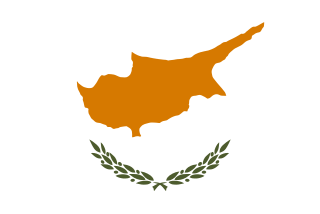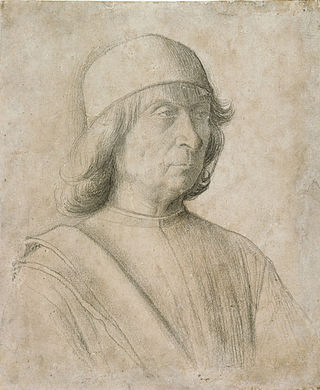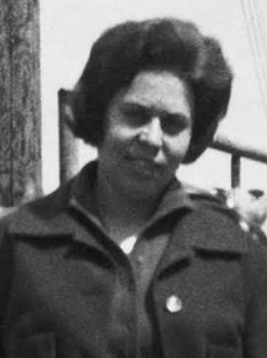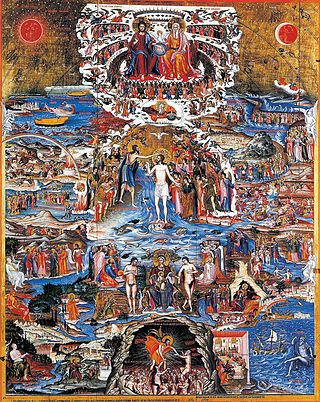
An artist is a person engaged in an activity related to creating art, practicing the arts, or demonstrating an art. The common usage in both everyday speech and academic discourse refers to a practitioner in the visual arts only. However, the term is also often used in the entertainment business, especially in a business context, for musicians and other performers. "Artiste" is a variant used in English in this context, but this use has become rare. The use of the term "artist" to describe writers is valid, but less common, and mostly restricted to contexts such as critics' reviews.

Cyprus, officially the Republic of Cyprus, is an island country in the eastern Mediterranean Sea. It is geographically a part of West Asia, but its cultural ties and geopolitics are overwhelmingly Southeast European. Cyprus is the third largest and third-most populous island in the Mediterranean. It is east of Greece, north of Egypt, south of Turkey, and west of Lebanon and Syria. Its capital and largest city is Nicosia. The northeast portion of the island is de facto governed by the self-declared Turkish Republic of Northern Cyprus.

Gentile Bellini was an Italian painter of the school of Venice. He came from Venice's leading family of painters, and at least in the early part of his career was more highly regarded than his younger brother Giovanni Bellini, the reverse of the case today. From 1474 he was the official portrait artist for the Doges of Venice, and as well as his portraits he painted a number of very large subjects with multitudes of figures, especially for the Scuole Grandi of Venice, wealthy confraternities that were very important in Venetian patrician social life.

Stass Paraskos was an artist from Cyprus, although much of his life was spent teaching and working in England.
Events from the year 1936 in art.

Lists of painters cover painters and are organized by name, nationality, gender, location, school and collection.

Lempa is a village in Cyprus located approximately 4 km (2.5 mi) north of the town of Paphos. It is sometimes written as Lemba, which is also closer to the correct pronunciation. Neighbouring villages are Empa, Kissonerga and Chlorakas.
İsmet Vahid Güney was a Turkish Cypriot artist, cartoonist, teacher and painter. He is best known as the designer of the modern flag of the Republic of Cyprus, the country's coat of arms and the original Cyprus lira in 1960. Güney's design was unique, as the Republic of Cyprus is the first country in the world to display a map on its flag.

Anna is a feminine given name, the Latin form of the Greek: Ἄννα and the Hebrew name Hannah, meaning "favour" or "grace".

The following outline is provided as an overview of and topical guide to Cyprus:
Marios Loizides (1928–1988) was a Greek Cypriot visual artist.
Margaret Frances Paraskos is an English-born artist of Cypriot descent and a resident in Cyprus. She is the daughter of the Cypriot artist Stass Paraskos and succeeded him as the director of the Cyprus College of Art.

Loukia Nicolaidou was the first Cypriot woman to study art abroad and is considered a pioneer for women professional artists in Cyprus. Her painting The Good Fruit of the Earth is part of the collections of the State Gallery of Contemporary Cypriot Art.

Katy Stephanides was one of the leading artists in Cypriot modernist movement in the second half of the 20th century and the first decade of the 21st century. She held her first solo exhibition in 1972 featuring abstract geometric paintings and continued exhibiting through 2003. She has works in the collections of the Byzantine Museum of the Archbishop Makarios III, the Loukia and Michalakis Zambelas Art Museum, the Municipal Art Gallery of Limassol and the State Gallery of Contemporary Cypriot Art.

Theodore Apsevdis was a Greek painter assumed to be from Constantinople. He is one of the few Byzantine painters known by name. His contemporary in Italy was Alberto Sotio; both painters were active during the same period. They were active during the Komnenian restoration. Apsevdis's work influenced the Palaeologan Renaissance. Several Italian artists who painted in the style were Coppo di Marcovaldo and Guido of Siena. Apsevdis and his contemporaries set the stage for the Italian and Cretan Renaissance. Some of his notable work is in Cyprus.

Ioannis Kornaros was a Greek painter. He was one of the few painters from Crete during the 19th century. He does not belong to the Cretan Renaissance but was influenced by the art. He is considered to be one of the foremost icon painters of the Greek Neoclassical era and Modern Greek Enlightenment in art also known as Neo Hellenikos Diafotismos. He implemented a unique style. He was influenced by Michael Damaskinos, Georgios Klontzas, Victor and other Cretan artists. He influenced Modern Greek art. He is one few Greek painters affiliated with Cyprus. Others included Ioannis Kyprios and Theodore Apsevdis. His teacher was Georgios Kastrofylakas. His most famous painting Great Art Thou resembles Georgios Klontzas's In Thee Rejoiceth.